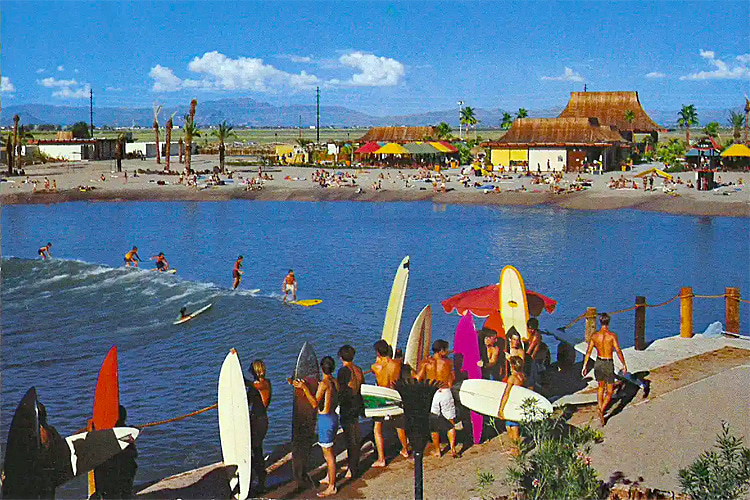In the 1960s, surfing was the sport of the moment in California. But 400 miles from the Golden State coastline, a revolutionary inland ocean was also pumping its first rideable waves.
Big Surf is widely regarded as North America's original inland wave pool.
The 20-acre complex was the first of its kind to consistently generate 3-5-foot spilling waves every 45-80 seconds that could be ridden on a surfboard.
Later, the wave setup was kept at three feet every 90 seconds because the developer found that if waves were generated any faster, surfers could not get back on the boards fast enough.
The waterpark's Waikiki Beach used a mechanical wave machine that created a single transverse wave of sufficient height and duration to permit surfing.
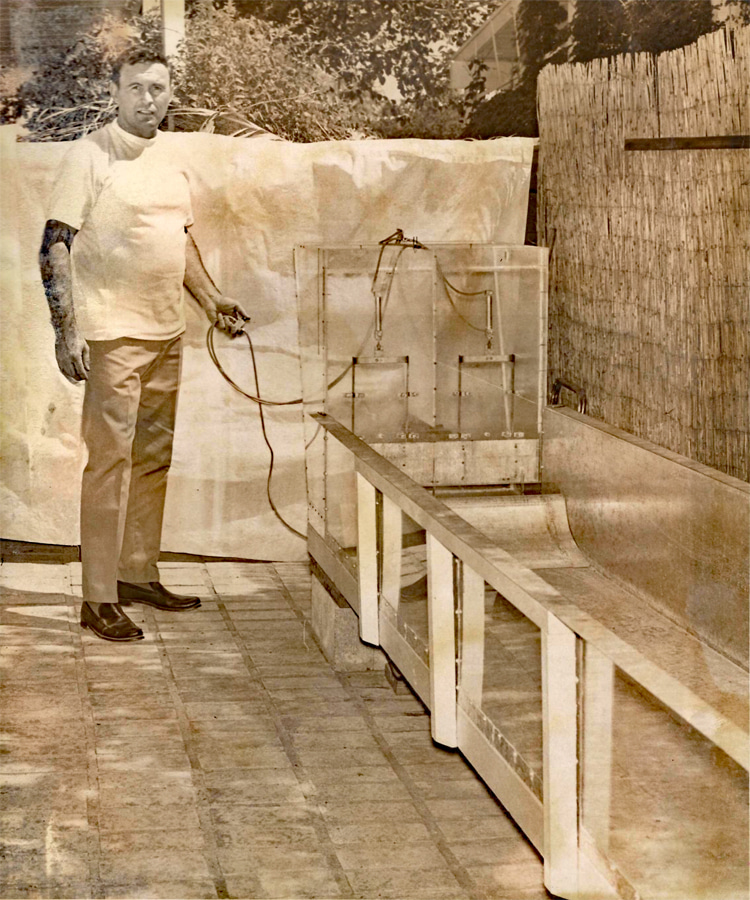
Phil Dexter: A Man With a Vision
The dream to erect an ambitious outdoor sports facility that could get surfers inland started seeing the light of day in 1965.
While driving from one job in San Diego to another in Los Angeles, construction engineer Phillip Dexter often pulled over to watch the surfers.
"What was there about the waves? I do not know, except that they were beautiful. To me, they were very beautiful when people were riding them," Dexter later recalled.
When he returned to Phoenix, he became obsessed with the idea of making inland waves.
One year later, he built the first model of his hydraulic-propelled wave machine in his backyard.
Thirty residents contributed $25,000 in return for shares to assist Dexter in constructing his wave-making laboratory in the disused pool hall.
In the summer of 1967, Dexter built a larger-scaled model in an abandoned billiards hall in Phoenix, using plain tap water to create live-inch ripples in a narrow sloping vat two feet wide and 30 feet long.
The design created 60,000 rolling waves in one summer.
A fully engineered model was built later that year.
The prototype, a miniature replica, generated waves every 20 seconds in a miniature lagoon, 40 feet by 30 feet, and held 1,000 gallons of water.
Dexter began the patent process to protect his invention, and in the same year, hair coloring and hair care company Clairol invested to make the wave machine a reality.
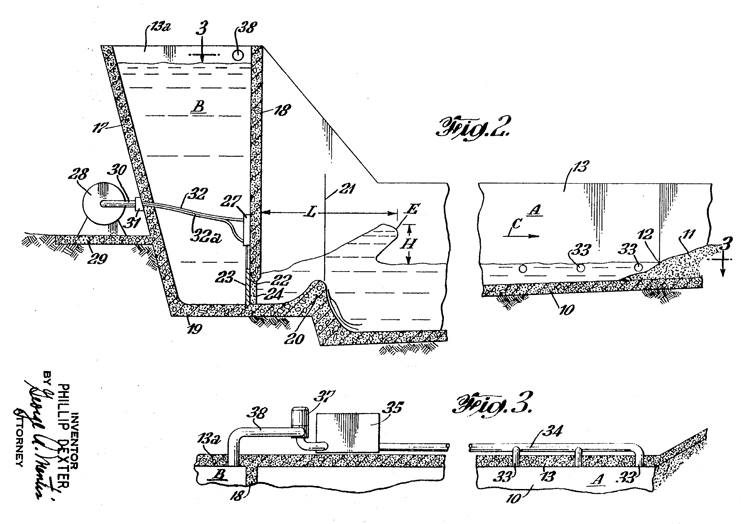
Big Surf: A Wave-Riding Oasis
The construction of $2 million Big Surf began in January of 1969 in Tempe, Arizona, ten miles east of downtown Phoenix.
During the trials, a problem emerged.
Clairol imported 23,000 tons of gravel from an Arizona dam site for the Big Surf beach, claiming it had been cleansed of mud - though likely not in recent millennia.
When waves first hit the Big Surf beach, the lagoon transformed into a muddy brown, reminiscent of the Lower Ganges Canal during laundry days.
After numerous days of generating waves and repeatedly filtering the water, the mud was eventually cleared from the gravel.
In September of that year, the surprising wave pool opened with a press conference and live surfing demonstration by world surfing champion Fred Hemmings Jr.
The journalists witnessed the machine generate five-foot waves every minute.
On October 24, 1969, the "surf center," as Phil Dexter used to call it, opened doors to the thousands of curious surfers and non-surfers who wanted to see the magic of creating waves surrounded by the arid Sonoran desert and Arizona's Camelback Mountain.
Tickets to the wave-riding oasis cost $1 for children and $3 for adults.
The facility was adorned with scale-model palm trees and Polynesian beach houses, giving the whole place the vibes of an oasis.
Each ride allowed a total of eight surfers, four on each side.
"Building Big Surf was a wonderful experience," Dexter later revealed.
"The Desert Blooms With Surf," Life Magazine wrote.
"Instant Ocean: It Just Keeps Rolling Along," highlighted Sports Illustrated.
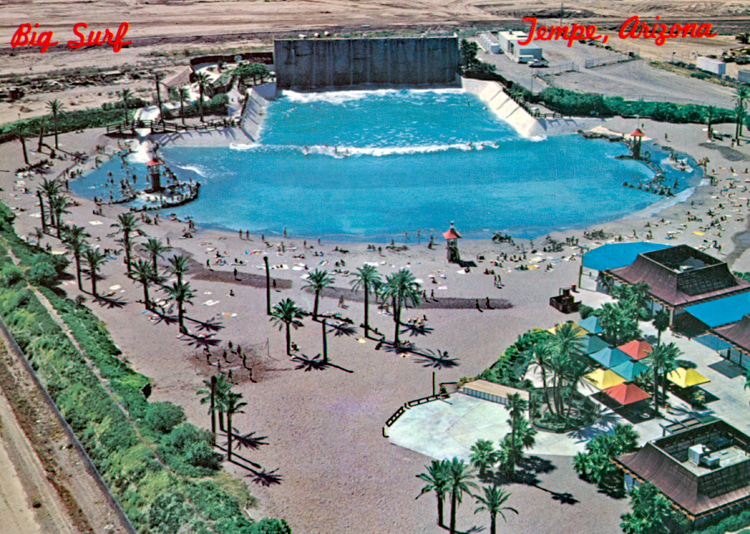
The Lagoon and the Wave-Generating System
The lagoon, including its artificial beach and lifeguard paths, was 400 feet long and 300 feet wide.
It held four million gallons of clean, circulating water.
The lagoon's floor got shallower the farther you went from the reservoir, and it widened to stop waves from bouncing back and disrupting incoming waves.
Before it opened in 1969, the lagoon's floor was switched from vinyl to concrete because concrete lasts longer.
The wave-generating mechanism was simple and worked similarly to the flapper on a toilet.
It used 15 gates that emptied filtered water from a reservoir into the lagoon with a slope and contours replicating a natural beach.
Fifty-thousand gallons of water released rapidly in 1.7 seconds by the gates flowed over a submerged baffle, similar to a natural reef.
As water hit the underground system, it deflected and rotated the oncoming water mass toward the surface.
As the chlorine water moved forward, the lagoon shallowed, allowing the waves to break for 100 yards as they would at a shoreline near the beach.
Pumps then recirculated water from the lagoon back to the reservoir.
A fast-acting directional valve controlled oil flow to hydraulic pistons that actuated the gates.
This system could alter the height and frequency of the waves.
It used water-soluble oil and included an accumulator and pipe snubbers to control water hammer and shock.
Big Surf used all the original hydraulic system components throughout its history.
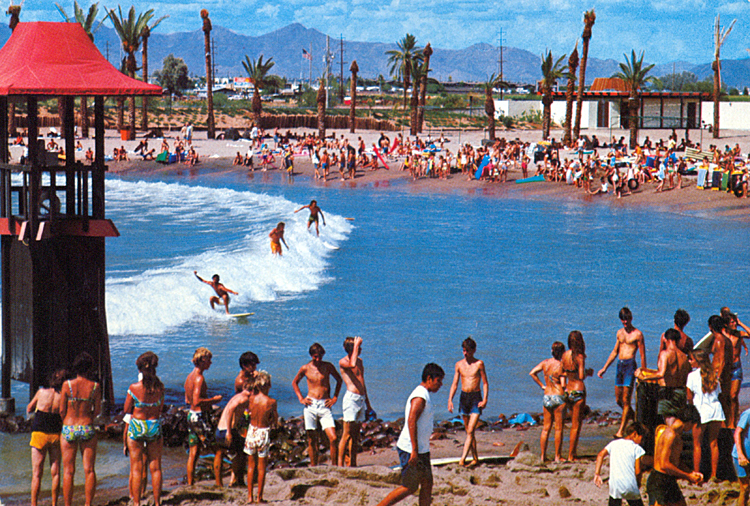
A Multifaceted Surf Center
For decades, Big Surf's wave pool was the third-largest in the world, holding 2.5-4 million gallons of water and featuring over a dozen additional rides for all ages.
The structure added extra entertainment facilities throughout the decades, including shops, concessions, and a musical stage.
The venue welcomed numerous concerts from musicians like Pink Floyd, Elton John, Red Hot Chili Peppers, The Beach Boys, Chicago, Sting, Rod Stewart, and many more.
The concert tradition was revived in 2011 with the Soundwave Music Festival.
Big Surf was featured in three movies: "Just One of the Guys" (1985), "North Shore" (1987), and "Storm of the Century " (1999).
Linda Benson's GAF View-Master "Instructional Surfing" cardboard disk photos were shot at Big Surf, Arizona.
It featured three seven-scene reels - or 21 full-color 3D pictures - and a 16-page color illustrated booklet.
In September 1987, Pope John Paul II visited Arizona, dropped by Big Surf, and blessed the human-made wave.
Phil Dexter, the wave pool mastermind behind Big Surf, passed away on November 7, 2014. He was 87.
The inventor was inducted into the World Waterpark Association Hall of Fame in 2013 and received the designation of Historic Mechanical Engineering Landmark by the American Society of Mechanical Engineers (ASME).
Interestingly, Phil Dexter had never seen the ocean until he served on the USS Saginaw Bay in the closing year of World War II, i.e., 1945.
The Tempe wave pool was open for 51 years. During the 2020 pandemic, it closed down, and some of its assets were auctioned.
In 2022, the space was sold for $49.97 million to Overton Moore Properties. The Tempe City Council granted permission to build an industrial park in the historic wave-riding site.
